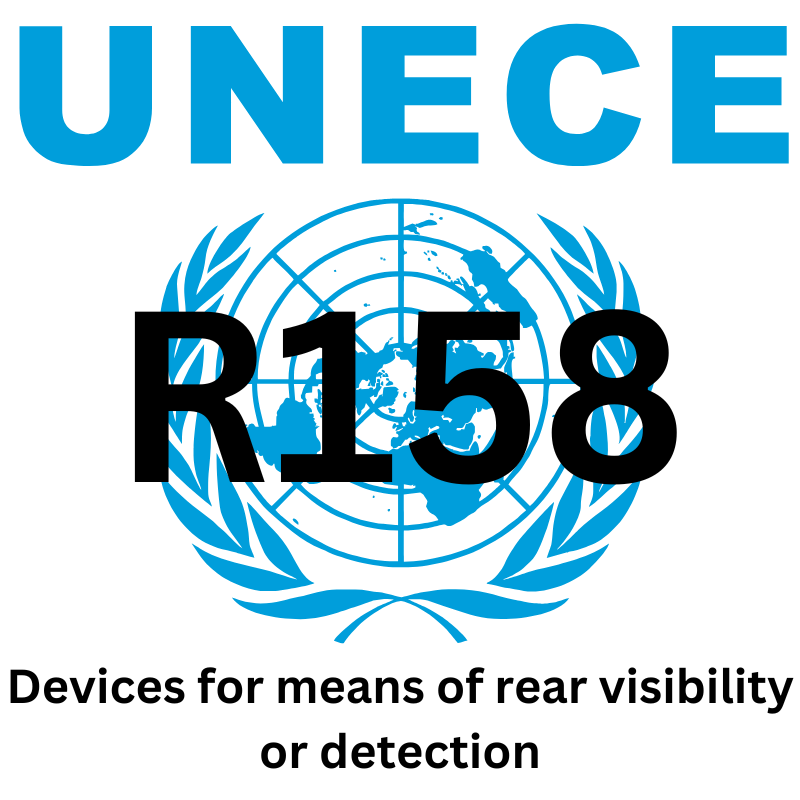Guide To: UNECE R158 - Devices for means of rear visibility or detection
23 October 2024

Guide To: UNECE R158 - Devices for means of rear visibility or detection
UN ECE Regulation No. 158 focuses on improving the driver’s awareness of vulnerable road users (VRUs), such as pedestrians and cyclists, when a vehicle is reversing. This regulation sets uniform provisions for the approval of reversing motion devices for motor vehicles and their installation, aiming to reduce accidents involving VRUs behind vehicles.
Scope of the Regulation
UN ECE R158 applies to:
- Devices for reversing motion intended for vehicles in categories M (passenger vehicles) and N (goods vehicles).
- Approval of vehicle installations that include such devices, ensuring proper functionality in real-world scenarios.
Key Features of UN ECE R158
Reversing Motion Devices:
- These devices can include traditional mirrors, rear-view camera systems (RVCS), and detection systems that provide visual or auditory information to the driver, helping them detect objects or people behind the vehicle when reversing.
Detection and Signalling:
- Detection systems may provide optical, acoustic, or haptic signals to alert the driver when an object or person is detected behind the vehicle. For example, audible signals may change their frequency as the distance to an obstacle decreases.
- Rear-view camera systems must display a clear image of the rear of the vehicle during a backing event, which begins when the vehicle is placed into reverse and ends when it moves forward or remains stationary.
Field of Vision and Detection:
- The regulation defines a close-proximity rear-view field of vision that must be visible when tested under specific conditions. This field of vision helps ensure that the driver can detect obstacles located directly behind the vehicle.
- The field of detection is another important area monitored by detection systems, ensuring that objects within a defined space behind the vehicle trigger a warning.
Approval and Testing:
- Manufacturers must apply for approval of both the devices and their installation in vehicles. Each device is subject to rigorous tests, ensuring they perform correctly under various conditions, such as different lighting environments or potential electromagnetic interference.
- The systems must be responsive within a maximum of 2 seconds from the start of the backing event to meet safety requirements.
Manual and Automatic Deactivation:
- The regulation allows for the deactivation of reversing systems under certain conditions, such as when a trailer is connected to the vehicle. In these cases, the system can switch to displaying images from the trailer’s camera or deactivate the detection system.
Conclusion
UN ECE R158 establishes essential guidelines for ensuring that motor vehicles are equipped with effective reversing motion devices, improving the driver’s awareness of vulnerable road users and reducing the risk of accidents. This regulation is critical for manufacturers and fleet operators aiming to enhance vehicle safety, especially in urban environments where the risk of collisions with pedestrians and cyclists is high.